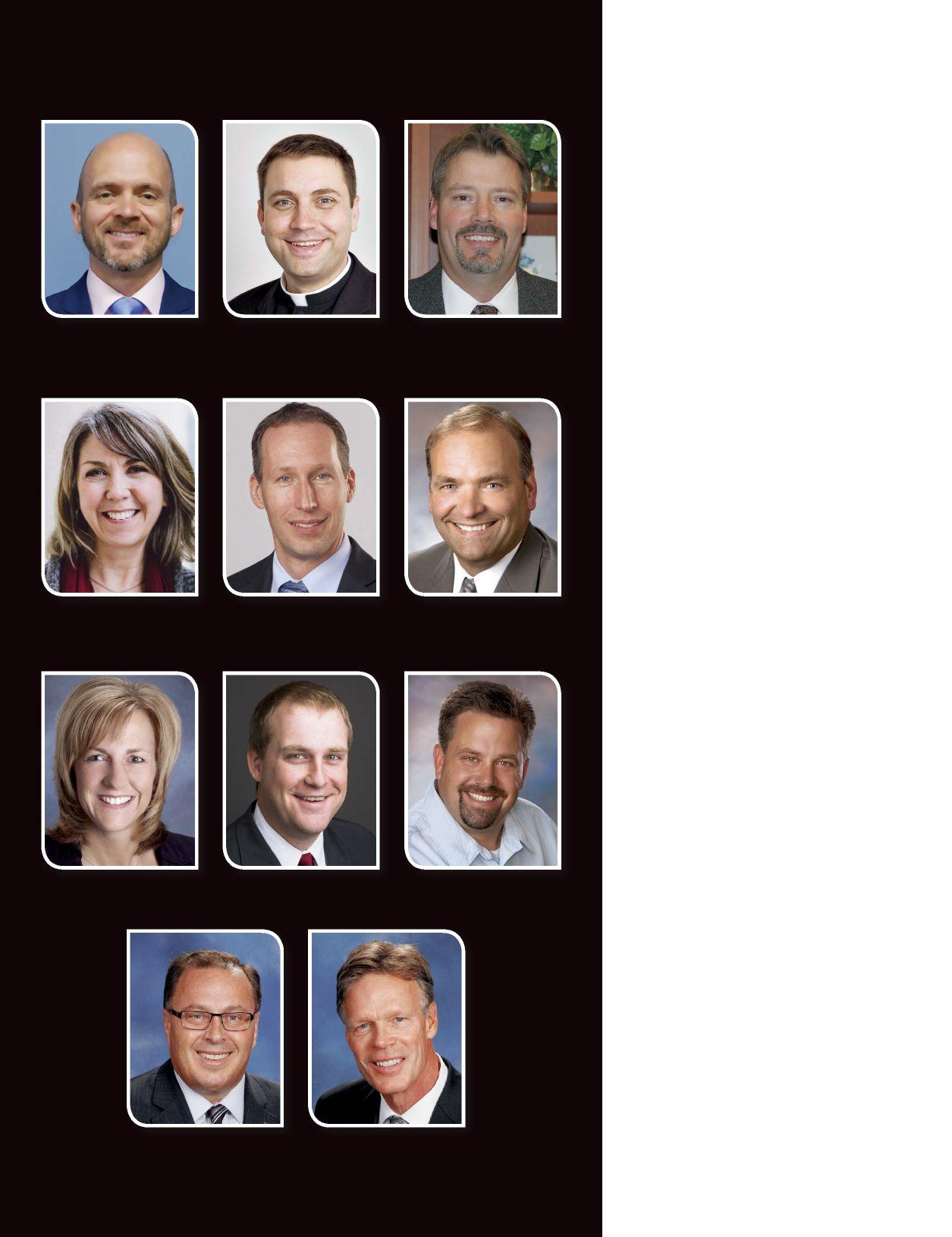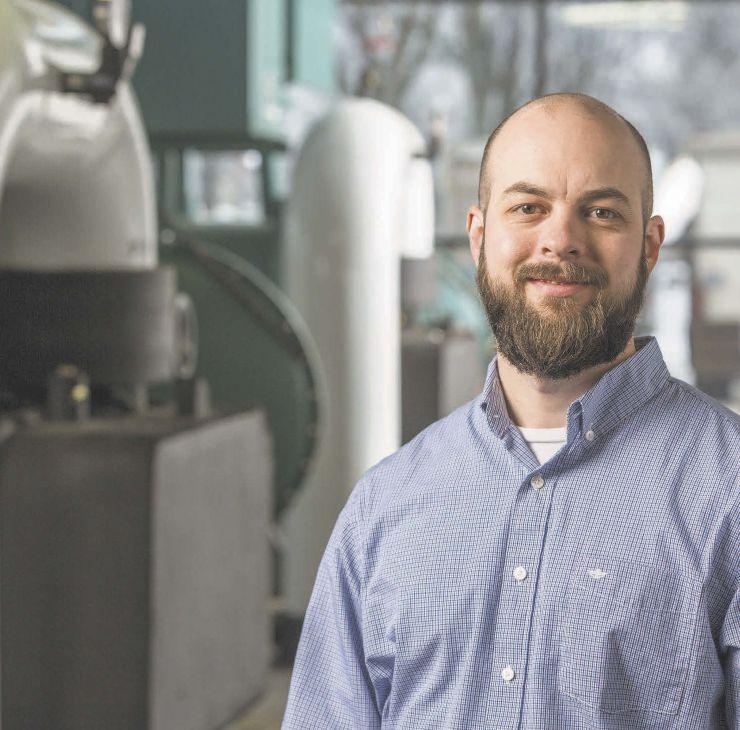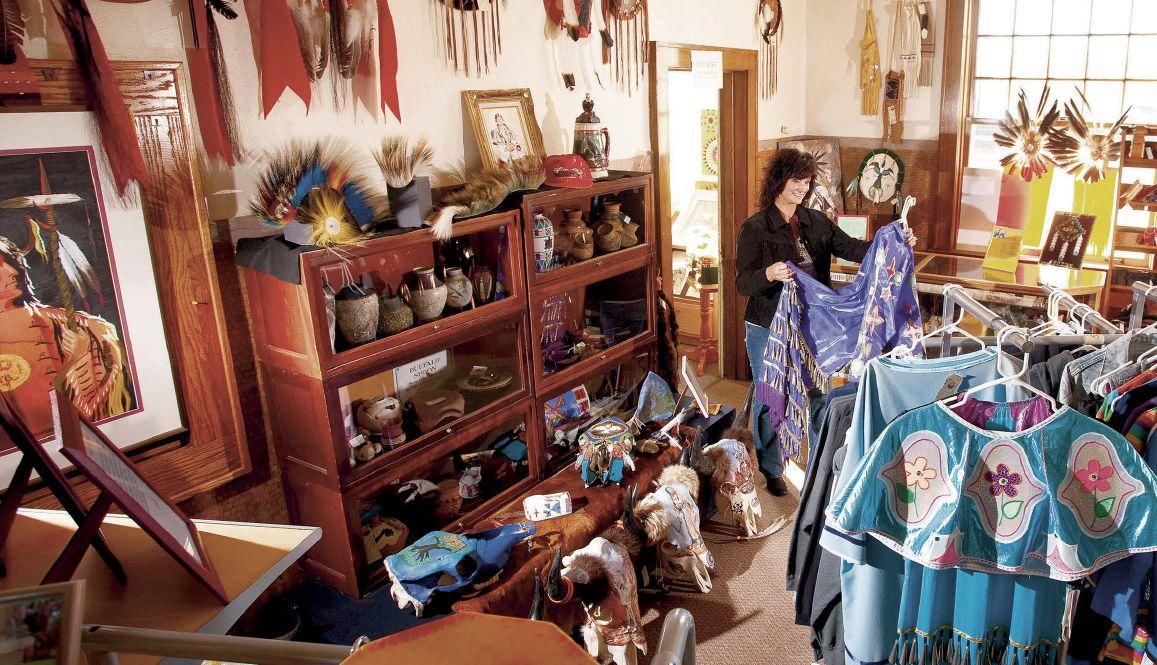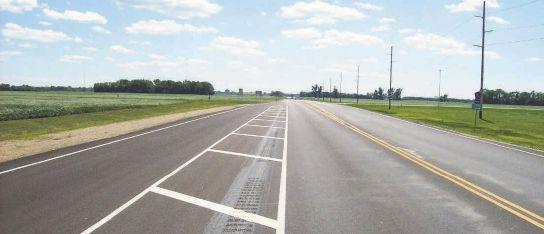
5 minute read
COMMUNITY PROFILE GUESTS
completion (programs) in a small office downtown. Our MBA and graduate programs in physical therapy, occupational therapy, nursing and speech/language pathology will find their headquarters downtown, adjacent to the Five South project.”
Higher Education
Higher education plays a large role in Bismarck and Mandan’s economies, with more than 8,000 college students living in the metro area, according to the BMDA. Still, Ritter says the cities don’t utilize those students as well as they could. “We need to increase our ability to keep those students here. We still have 2,500 job openings and 2 percent unemployment rate.”
Officials at the University of Mary and Bismarck State College are focused on the challenges facing their institutions and the community as a whole. The University of Mary received a $10 million gift last year to fund nursing scholarships, which Shea says is vital as the “workforce concerns in health care are really significant. … We’re training a lot of nurses from all over the world.”
The university also has seen a surge in its other health sciences programs, as well as in its business school. Most significantly, the university is launching an engineering program in the fall, offering five concentrations. Shea says the programs were prompted by more than 700 inquiries into such offerings the university didn’t have. The University of Mary launched a virtuous leadership concentration in its Master of Business Administration program and is working on plans to launch construction management and cybersecurity programs. “We’re looking at all of our schools to see where the demand is and to bring programs that will make North Dakota a better place and resonate with our students,” says John Warford, dean of the Gary Tharaldson School of Business at the University of Mary and former mayor of Bismarck.
“These programs are making a difference, even with the people who are moving back home,” says Nicole Kivisto, president and CEO of MDU Utility Group. “These things help build a workforce of people that want to stay here. As an employer, those are the kind of things we like to see, and we have seen an influx of people who want to come back.”
At Bismarck State College, administrators are coping with a $1.5 million budget cut, which Marnie Piehl, director of college relations, says hurts. “Culture has been an interesting thing to deal with during this. We won’t be filling the provost position until at least 2017, so how do you maintain culture and not throw everyone into a panic when you’re receiving a budget cut?”
Piehl says BSC is looking forward to a surge of high school students graduating in two to three years that will boost enrollment.
Government
Higher education plays a key role in the metro area’s largest employer, state government. “This is a government town,” Warford says. “Our philosophy is a more educated workforce and lifelong learners. We’re trying to adopt that into the public sector. Our Master of Public Administration program is tapping the best and brightest to teach this program, and we’re putting in a tribal component.”
Hunke says Mary’s MPA program will help on a local government level too. “I had a great opportunity spending time to identify what our needs are as a city organization. Oftentimes we get employees who have very strong skills but identify the need of having more time with the soft skills. Our department heads will struggle with personnel issues and legal issues. We’re excited about what the program will bring us, not just for current employees, but it will bring us a new pipeline of employees, as well.”
Greg Vetter, executive vice president of the University of Mary, says the public sector has been a good partner for the university. “Having a very welcoming public sector when we want to develop something new has been wonderful. This is something special in our community — having a public sector that doesn’t stand in the way of businesses.”


Health Care
CHI St. Alexius and Sanford Health are two of the largest employers in the metro area, and also one of the sectors with the most acute workforce needs. “When we received the gift from CHI, we quickly decided we wanted to invest it in scholarships, part of which is because our students do their clinicals locally,” Shea says. “The urgent need for health care professionals is really acute. In a growing place like this, it’s very significant.”
Chris Jones, senior vice president of strategy and business development for CHI, says the health care organization knows Bismarck and higher education are where its investment needs to be. “We need people bad. Since so many of the graduate nursing students are from out of state, they’re still looking to leave, so our retention rate isn’t as high as we need it to be. All of the infrastructure is critical to retaining them.”
Jones says the key now is figuring out how to teach culture in health sciences programs. “Health care is going to change fast. Workforce is our No. 1 issue now and 10 years from now, maybe longer.”
Warford says the University of Mary is doing what it can to respond to the workforce needs of the metro area’s top two employers, government and health care. “We really need to keep our eye on the ball. It’s so important that we in higher ed listen to guys like Chris (Jones) so this large part of our economy — health care — is OK. Workforce is at the top of everyone’s lists, and we’re doing everything we can in higher ed.”
Energy
While Bismarck and Mandan sit on the edge of the Bakken oilfield, which is experiencing a significant slump, Ritter says the metro area’s economy will be fine because it is so diverse. “It is directly affecting Bismarck-Mandan’s housing market. I see vacancies, but I don’t see people looking to board up the doors. It wouldn’t surprise me to see more hotels in the next 36 to 48 months.”

Ritter says interest still is increasing in retail in the metro area, with H&M recently announcing its first store in North Dakota will be in Bismarck. “Retail is not slowing down,” Ritter says. “Basin Electric, U of Mary, the city of Mandan, Dakota Carrier Network and several other major companies all have construction projects going on so we will see no decline in commercial construction. The job rate isn’t going to change. I won’t say we won’t have challenges, but I am not worried how oil prices are going to impact Bismarck’s economy.”
At MDU Resources’ utility companies, “when we look at our Bakken customer growth, electric customers still grew 5 percent,” Kivisto says. “We serve the core communities so we think it’s people moving from non-permanent to permanent housing. We have seen a decline in residential construction activity, but in the heart of the Bakken, we’re still seeing customer pickup. We’re also picking up the service for those moving from man camps.”
At Basin Electric, Mike Eggl, senior vice president of communications and administration, says the co-op has seen a drop-off in the Bakken, but the core drilling rigs are still going. “We’re not laying off on the transmission projects that we’ve been working on.” Basin is also expanding its headquarters, a project that has been delayed for many years, Eggl says. “We had employees at five different facilities, so we’re adding on 90,000 square feet in a way that is as limiting of a disruption as possible.” The $38 million expansion is expected to be complete in mid-2017.
Bismarck has felt western North Dakota’s oil downturn in a different way, as well. “Baby Boomers are moving to Bismarck and Fargo from western North Dakota,” Warford says. “These are people who have money, buy houses, invest in health care and make investments. It’s one of the sadder parts of the downturn in western North Dakota that has been a boon for here.”

Both BSC and Mary felt the oil boom by way of less available housing in the community for its students, and had to increase on-campus housing. “At our community college, we’ve had to open three new residence halls,” Piehl says. “That’s not the norm, but they have nowhere to go. Our residential halls have come from our foundation and community partnerships because we don’t have that operational budget.” Mary now has more than 1,000 beds, Shea says. “It’s been exciting for us because we always wanted to be more of a residential campus. Now we have a much more vibrant campus. It’s transformed our culture.” PB











